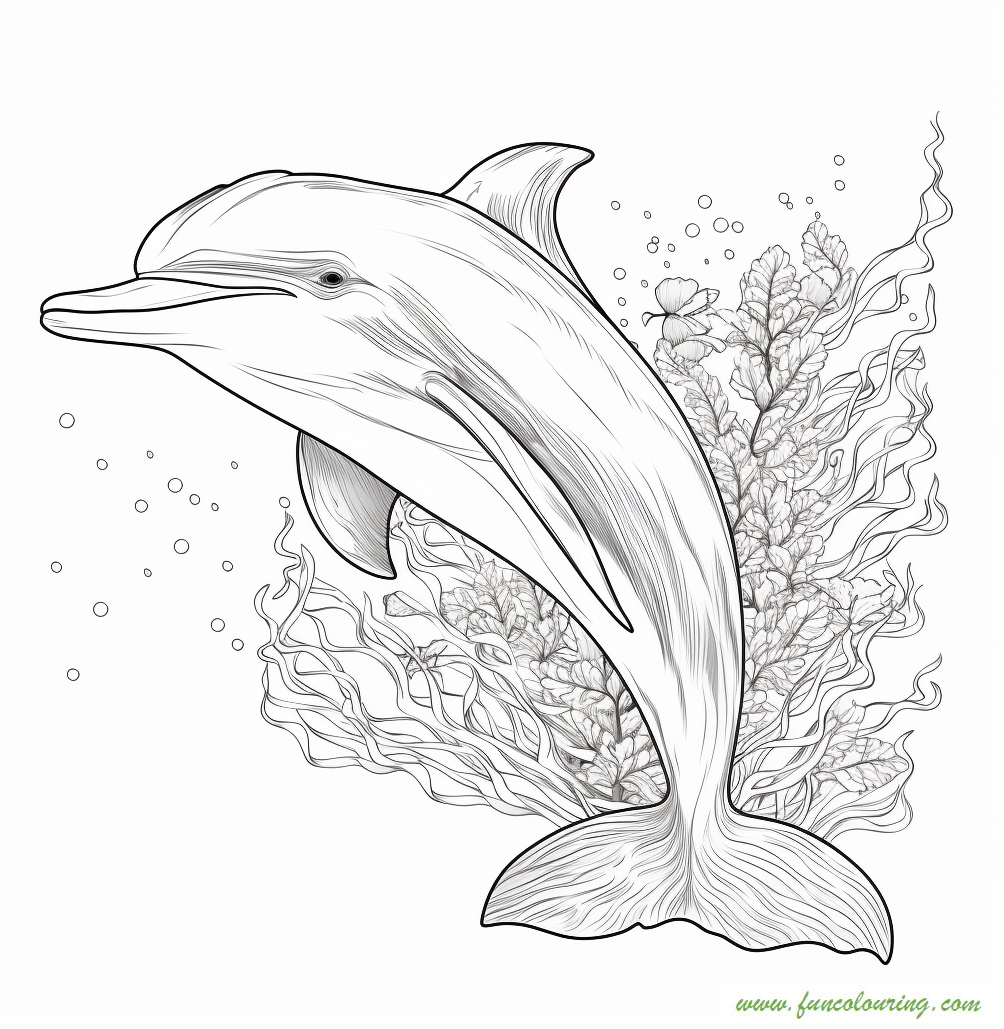Dolphins are majestic creatures of the sea that have captivated the hearts of many through their friendly nature. One enjoyable way to spend your free time is by coloring a dolphin drawing. This activity is not only fun but also a creative outlet that allows you to explore your artistic side.
By using various coloring techniques and a unique palette, you can bring this wonderful creature to life on paper. In this blog post, I’ll guide you through the process of coloring a dolphin drawing and adding your personal touch. We also have a collection of free printable coloring pages of dolphins on this website for your fun. Just click to print or download and get started. See the link to the free printable dolphin coloring pages.
Supplies Needed to Color a Dolphin
Before diving into the creative process, you need to gather the following coloring tools:
- Coloring pencils
- Watercolors
- Paintbrushes
- Pencils
- Erasers
- Crayons
With these supplies in hand, you’re ready to begin your coloring adventure.
A Step-by-Step Guide to Coloring Dolphins
Coloring a dolphin is a delightful activity that anyone can enjoy. If you’re ready to bring this majestic creature to life, follow these steps:
1. Prepare Your Workspace
Find a comfortable and flat surface where you can lay out your coloring materials. Having an organized workspace will help you focus on your coloring. You might also want to download a free dolphin coloring page from our website. See the link provided for printable options.
2. Choose Your Coloring Supplies
Decide on the supplies you want to use. Options include watercolors, crayons, colored pencils, markers, and pastels. Select the medium that best suits your style and the effect you want to achieve.
3. Select Your Color Palette
Although dolphins are commonly shades of gray, they can also appear in hues of blue, purple, or even green in creative interpretations. If you’re unsure which colors to use, consider looking up reference images for inspiration.
4. Color the Dolphin’s Body
Start by choosing a primary color for the dolphin’s body. If you want a realistic look, use shades of gray or blue-gray. Begin with lighter shades and layer darker tones to create depth and dimension. Use smooth, even strokes for a polished appearance.
5. Add Highlights
To make your dolphin coloring pop, add highlights using a lighter shade of your base color or white. Focus on areas like the dolphin’s back, top of its head, and fins where light naturally falls.
6. Blend the Colors
Blending is key to achieving a lifelike look. Use a blending tool, your fingers, or even a soft brush to smooth the transitions between shades. This will make your coloring appear seamless and professional.
7. Include Details
Pay attention to the small details, such as the dolphin’s eyes, mouth, and markings. Use fine-tipped coloring tools to ensure accuracy and precision when working on these elements.
8. Add a Background
Enhance your dolphin drawing by including a background. Consider elements like splashing water, bubbles, or underwater scenery with seaweed and coral. Choose colors that complement the dolphin without overshadowing it.
9. Experiment and Have Fun
Feel free to get creative with your coloring. Experiment with bold colors or unique patterns to make your dolphin truly one of a kind. Let your imagination guide you and enjoy the process.
10. Final Touches
Once your coloring is complete, take a moment to review your work. Fix any mistakes with an eraser and add final touch-ups where necessary. You can also outline the dolphin with a darker color to make it stand out.
Tips for Coloring Dolphins
To achieve stunning results, consider these helpful tips:
- Use a reference image: Look online for pictures of dolphins to inspire your coloring. Reference images can guide your choice of colors and shading techniques.
- Blend colors: Blending creates smooth transitions between shades, giving your dolphin a realistic appearance.
- Add shadows: Use darker shades to create shadows under the dolphin’s belly, fins, and tail for added depth.
What Are the Colors of a Dolphin?
Most dolphins are shades of gray, with some species featuring unique patterns of black and white. Additionally, certain dolphins, like the Amazon river dolphin, are famously pink. While realism is an option, you’re free to explore vibrant and imaginative colors in your artwork.
Conclusion
Coloring a dolphin is a relaxing and rewarding activity that lets you unleash your creativity. By following these steps and tips, you’ll be able to bring this majestic creature to life in your own unique style. Don’t forget to download our free printable dolphin coloring pages to start your artistic journey today!

